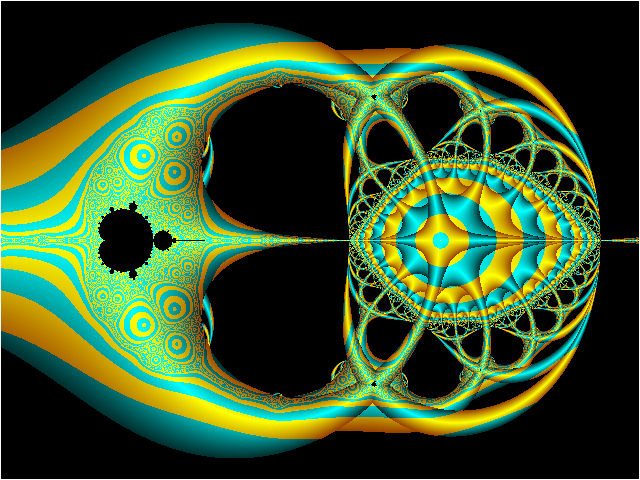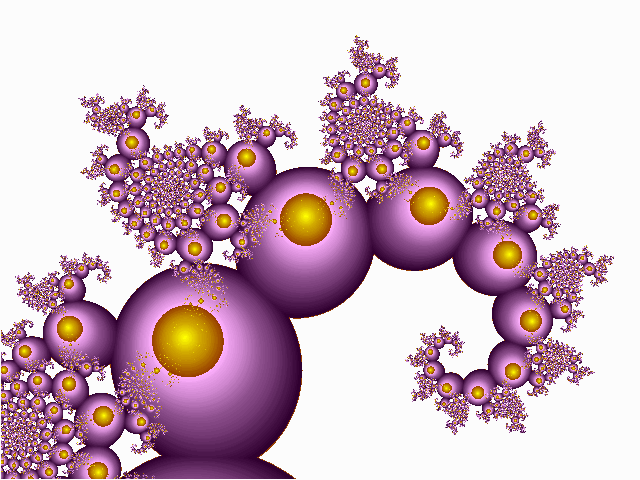![]()

The term "fractal" was coined by Benoit Mandelbrot about 1975 to describe a complex geometrical object that has a high degree of "self-similarity" and a fractional dimension that exceeds the normal, or "topological", dimension ("D") for that type of object.
Self-similarity means that sub-pieces within the object appear as scaled down, and perhaps translated and rotated, versions of larger pieces of the original object.
Classical geometric objects, such as lines ( 1-D ), areas ( 2-D ), and solids ( 3-D ), always have an integer topological dimension. If such an object is scaled up, or down, it's size varies as the scale factor raised to the power D.
Alternatively, the dimension could be determined by
the number, N, of basic units created by applying a scale factor, S, to
subdivide the original object into a group of pieces. For example, if the
edges of a cube are scaled by a factor of 3, the cube will be divided into
27 smaller cubes. Its dimension could be computed as follows:
N = (S)D or 27 = (3)D
so that D = (log27/log3) = 3
![]()
Fractional Dimension Example:
The concept of a fractional dimension was introduced by Felix Hausdorf about 1919. An example of such an object is the Helge von Koch "Snowflake", invented in 1904. It is created as follows:
1. Start with an equilateral triangle ( 3 sides of equal length ).
2. Divide each side into 3 equal pieces, and replace each center piece with 2 pieces, each of the same length as the one being replaced, tilted outward.
The initial end points remain fixed, but the overall length of the sum of all the sides is (4/3) the original length, since each line segment is divided into 3 pieces and replaced by 4 pieces.
3. Repeat this process with each linear piece of the new figure.
The overall result of continuing to iterate step 3, above, is a figure with a very complex boundary shape ( looking roughly like a snowflake ). As the number of iterations approaches infinity, the length of the boundary approaches infinity, although the area contained within it remains finite.
N = 4 = (3)D
so that
D = (log4/log3) = 1.2618.....
The boundary curve ( the set of connected straight lines segments ) is a fractal since it has a fractional dimension greater than one, and a very high degree of self-similarity.
There are many different types of fractals. This example
illustrates the simplest linear iterative process for creating one.
![]()
Julia Sets
The Julia Sets are generated by applying an iterative non-linear process which is outlined in the "Mathematics" section. They are based on a very simple square-law function
F(z,C) = z2 + C
where z is a point on the X-Y plane and C is a constant with both x and y components, Cx and Cy. The results were very surprising. No one expected that such a simple function could produce such complex images and be so difficult to analyze.
This web site is primarily focussed on the creation
of images using the Julia Sets and the closely related Mandelbrot Set (
M-set ). Images generated using Newton's "Root-Finding" method will also
be considered briefly.

![]()
Some Fractal Pictures



Fast access to the
following different links
A Note on the History of Fractals